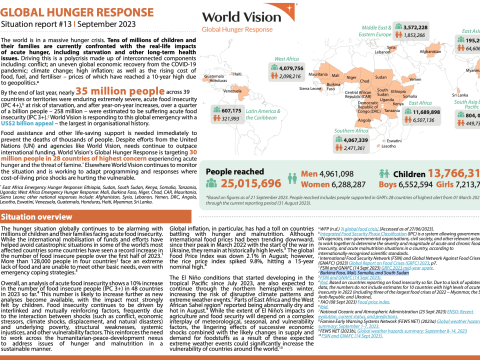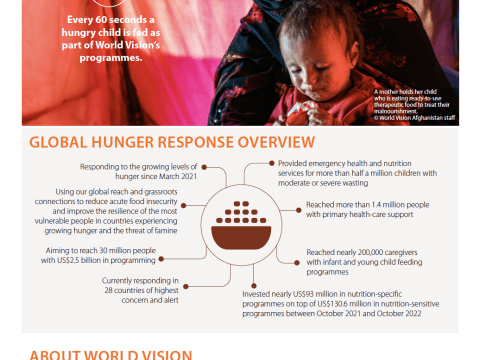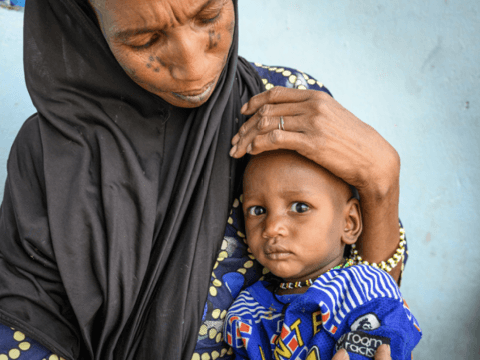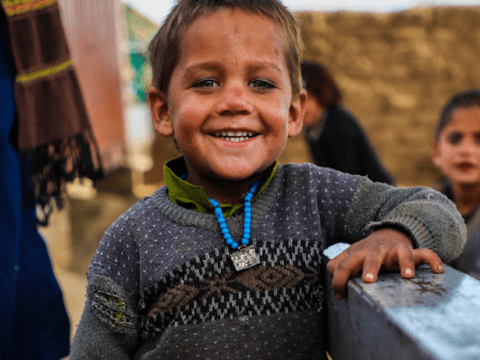Global Hunger Response Phase II Quarterly Situation Report #1 - January 2024
Download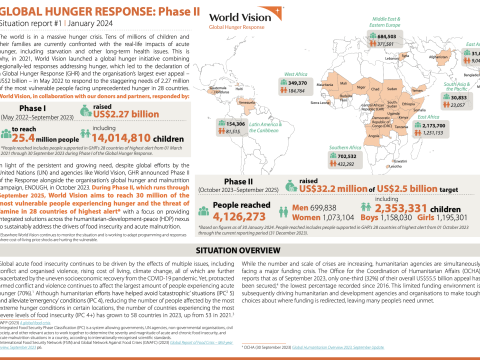
This is the first quarterly report released by the Global Hunger Response (GHR) which provides a detailed overview of our qualitative and quantitative impacts, including regional situational overviews and highlights over the course of the last quarter (October 2023 - January 2024).
The world is in a massive hunger crisis. Tens of millions of children and their families are currently confronted with the real-life impacts of acute hunger, including starvation and other long-term health issues. This is why, in 2021, World Vision launched a global hunger initiative combining regionally-led responses addressing hunger, which led to the declaration of a Global Hunger Response (GHR) and the organisation’s largest ever appeal – US$2 billion – in May 2022 to respond to the staggering needs in 28 countries. World Vision, in collaboration with our donors and partners, responded by:
- Raising US $2.27 billion
- Reaching 25.4 million people, including 14,014,810 children
In light of the persistent and growing need, despite global efforts by the United Nations (UN) and agencies like World Vision, GHR announced Phase II of the Response alongside the organisation’s global hunger and malnutrition campaign, ENOUGH, in October 2023.
During Phase II, which runs through September 2025, World Vision aims to reach 30 million of the most vulnerable people experiencing hunger and the threat of famine in 28 countries of highest alert* with a focus on providing integrated solutions across the humanitarian-development-peace (HDP) nexus to sustainably address the drivers of food insecurity and acute malnutrition.
Global acute food insecurity continues to be driven by the effects of multiple issues, including conflict and organised violence, rising cost of living, climate change, all of which are further exacerbated by the uneven socioeconomic recovery from the COVID-19 pandemic. Yet, protracted armed conflict and violence continues to affect the largest amount of people experiencing acute hunger (70%). Although humanitarian efforts have helped avoid ‘catastrophic’ situations (IPC 5) and alleviate ‘emergency’ conditions (IPC 4), reducing the number of people affected by the most extreme hunger conditions in certain locations, the number of countries experiencing the most severe levels of food insecurity (IPC 4+) has grown to 58 countries in 2023, up from 53 in 2021.
While the number and scale of crises are increasing, humanitarian agencies are simultaneously facing a major funding crisis. The Office for the Coordination of Humanitarian Affairs (OCHA) reports that as of September 2023, only one-third (32%) of their overall US$55.5 billion appeal has been secured, the lowest percentage recorded since 2016. This limited funding environment is subsequently driving humanitarian and development agencies and organisations to make tough choices about where funding is redirected, leaving many people’s need unmet.
Download the publication below to learn more. You can help children and their families overcome hunger by supporting our work here.
